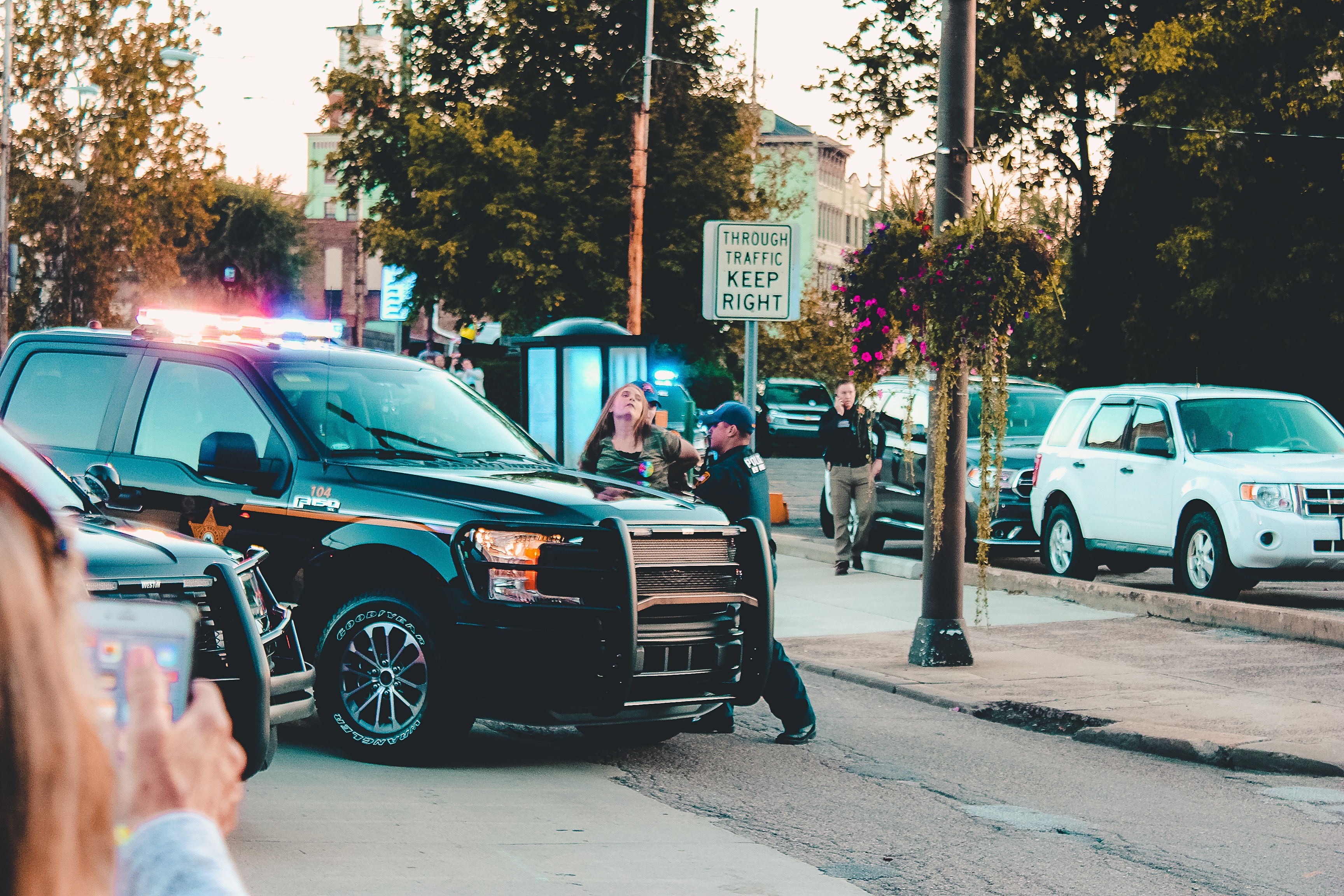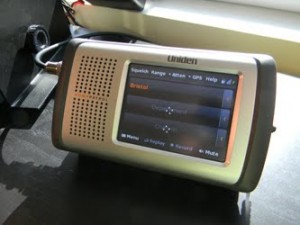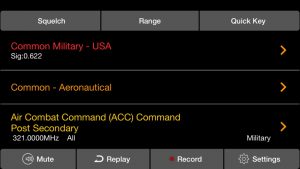We all love scanners, you would not be reading this if you didn’t. There are certain scanners that, much more than others, are so remarkable that they change the market or make a lasting impression on the hobby. Scanners that introduced new features, made other features popular or just were so darn good that they are beloved by the community will be discussed here.
If you have a favorite scanner that you think should be listed please let us know! The ones I discuss are scanners that I think helped define the market at the time and are real game changers. While some are obviously dated and obsolete today at the time they were introduced they really made a huge impact.
There were also a few real duds here and there. Bearcat once made a scanner that you inserted into an 8-track player. For those too young to know what that was, an 8-track player was used to listen to music recorded on magnetic tape held in large plastic cartridges in the days before cassette tapes, they were wildly popular in the 1970’s. This scanner was in the shape of one of these cartridges and had 4 crystal-controlled channels. It was a neat idea but worked poorly.
GRE Designs:
GRE built and designed many scanners for Radio Shack back in the day. Later they developed their own line in parallel with the Radio Shack line. Coincidentally both Radio Shack and GRE closed up operations for different reasons at about the same time and Whistler Group bought the GRE product line. Whistler continued to produce scanners for Radio Shack based on the Whistler designs for a short time and afterwards brought out their own line of WS and later the TRX scanners.
Radio Shack had a great advantage in that they had a huge retail infrastructure around the world and for years sold a wide range of scanners. While most were GRE built even Uniden made some of them.
PRO2004/5/6
The PRO2004 was introduced in 1986 and was probably the most revolutionary scanner of the day. It had 300 channels when 16 was considered average and 50 was considered remarkable. Its wide-open frequency coverage actually caused it to be recalled from stores to have the cellular frequencies blocked, this was easily defeated however, and the radio even had the proper spacing for them. They were coveted by the MilAir listener and helped create a large cottage industry for modifications and accessories. It spawned the PRO2005 and PRO2006 successors, similar in operation but in smaller cases with some other tweaks and additional memory.
PRO43
The PRO43 was introduced in the mid 1990’s and was the first handheld widely available that included the Mil Air band so were coveted by the airshow crowd. With 200 channels one could program in a ton of channels or do a search of the band. The tiny size made it easy to keep in a shirt pocket or camera bag.
PRO96
The PRO96 was the first P25 scanner that worked on the newer 9600 baud trunked systems, together with its mobile cousin, the PRO2096, one could now listen to these systems directly rather than in a conventional mode. It also provided a data source usable with software programs such as PRO96Com and has data detection modes that were well liked by radio enthusiasts.
PSR800/WS1080
The PSR800 was introduced in 2011, just before GRE went out of business. It was rebadged as the Whistler WS1080 soon thereafter and eventually morphed into the WS1088 and TRX-1 Mobile versions of the stillborn PSR900 became the Whistler WS1095, WS1098 and TRX-2. The PSR800 was the first scanner co work on Phase 2 P25 systems and was one of the first scanners with the on-board database and ZIP Code programming.
Uniden – Electra – Bearcat
Uniden Bearcat scanners originated with the Electra line back in the 1960’s and 70’s. After purchase by Uniden they retained the Bearcat branding and designs. Eventually Uniden bought the Regency brand and rebadged some existing Bearcat designs with Regency names.
Uniden became the biggest player in the market. Bearcat scanners have had great success with many groundbreaking designs over the decades. Here are just a few of the ones we think really made a huge difference:
BC-III
The BC-III was introduced in 1975 and was a VHF/UHF crystal scanner that was one of the most popular scanners of its day. It was unusual in that it allowed both UHF and VHF in the same radio in the days when that was not common. The speaker was huge and provided such good audio that years later, when the scanner itself was no longer useful, hobbyists would wire it up to be used as an external speaker for more modern scanners.
BC101
The BC101 was introduced in the mid 1970’s and was one of the earliest programmable scanners. It was programmed by setting the channel switches in a pattern for the specific frequency as listed in the programming guide. While kind of clunky, for the time it was revolutionary to be able to program a scanner without crystals and it had a huge 16 channel capacity.
BC210
The BC210 was introduced in 1977 and was Bearcat’s first direct entry programmable scanner. Imagine in the days when one would buy crystals for each channel, need programming combs or have to look up binary codes in a guide that they were now able to enter a frequency directly into a scanner. It was unheard of!
BC100
The BC100 was introduced in 1981 and was the one of first mainstream handheld programmable scanners. The first versions had a threaded antenna connector and later versions had a BNC. It used AA rechargeable batteries but they were internally mounted so a screwdriver was needed if you wanted to swap them out. It was a revolutionary handheld scanner that could be keyboard programmed without need of crystals, a new concept at the time.
BC235XLT/BC245XLT
The BC235XLT was introduced in the mid 1990’s and was the first TrunkTracker, it would scan Motorola trunked radio systems on 800 MHz. at the time. Before that one would have to enter the various channels into a scanner memory, lock out the current control channel and make a guess as to the actual users as there was no way to otherwise discriminate among them. The compact form and huge (for the time) capacity of up to 300 channels were huge selling points. The similar BC245XLT that came out a few years later added computer control and EDACS trunking to the mix.
BC780XLT
The BC780XLT was introduced in 2001 and changed the hobby more than almost any other scanner ever had. With 500 channels, the ability to track several formats of trunking, wide frequency coverage (including the Military air band) and great performance it remains a great scanner for many to this day. It was really the cream of the crop of the day.
BCD996/396 Series
The BCD996T was introduced in 2006 and replaced the BC780XLT as the flagship scanner, along with the portable version (BCD396T) it provided P25 reception and bullet proof reception along with up to 6000 channels of dynamically allocated memory. It spawned the BCD996XT and 996P2 mobiles and 396XT and 325P2 handhelds with similar features and carried on the Family arrangement of scanners where a handheld and mobile version were created. The 996/396 series introduced GPS enabled programming as well.
Home Patrol
The HomePatrol was introduced in 2010 and was the first ZIP Code enabled scanner. This truly revolutionized scanning and made it available to the masses who did not want to program a scanner, now they can just enter the ZIP Code to load the channels into the radio.
SDS100/200
The SDS100 handheld scanner was introduced in 2018, followed in 2019 with the mobile SDS200. These use the HomePatrol database but also provide excellent performance on digital simulcast systems. These systems have been the bane of scanners for as long as they have been around but finally a consumer scanner had good performance on them. With the color customizable display and ability to handle almost any type of radio system they will be the top of the heap for years to come.
Regency/RELM:
Regency, like Electra Bearcat, was an Indianapolis based scanner manufacturer that had some well-loved designs, especially in the 1970’s. Best known for its early crystal scanners, they had a large following. After many years they sold their scanner line to Uniden but a decade later came out with a new line of scanners under the RELM name that lasted only a couple years.
TMR-8H
The Regency TME-8H was an 8-channel VHF only crystal scanner from the late 1960’s. It was my first scanner, my dad had bought it for me so I could listen to him when he was working as a police officer in our hometown. We had the local channels at the time and with 8 channels I could hear all the local police and fire operations easily.
ACTR20-6
The Regency ACTR20-6 was a 20-channel 6-band crystal-controlled scanner introduced in 1975. This was the days when an 8-channel scanner was a luxury, and one could spend more on crystals than on the scanner itself.
AOR
AOR is better known for high-end receivers rather than traditional scanners but some of their products made it to the mainstream scanner market. The AR8000 was the most notable but there were a few others that became popular. AOR receivers do not follow trunking so are pretty much relegated to the advanced hobbyist or specialty uses.
AR8000
The AOR AR-8000 was introduced in 1994 and was an early full-range and all-mode scanner with 1000 channels. It covered just about anything with antennas at the time, covering the entire shortwave, VHF and UHF bands, from 500 KHz. To 1900 MHz. It did most analog modes, including CW and SSB and was computer programmable and controllable. It was popular to use with the OptoElectronics Scout recording frequency counter and one could buy a special cable and battery door (that allowed the cable to plug into the radio) to connect the two devices. This allowed one to get a hit on the Scout and hear the traffic on the AR8000. While current scanners have the CloseCall or Spectrum Search these days this was revolutionary at the time. It was also known to have great sensitivity and worked well on the cell bands.
Other Brands:
There were many other popular brands like Robin, Midland, Cobra, RCA and others. Some were rebadges of radios made by Regency, Bearcat or GRE but many were (or are) their own designs. Many department stores of the day like Montgomery Wards, Sears and others also sold Regency or Bearcat scanners rebadged with the retailer’s name.





